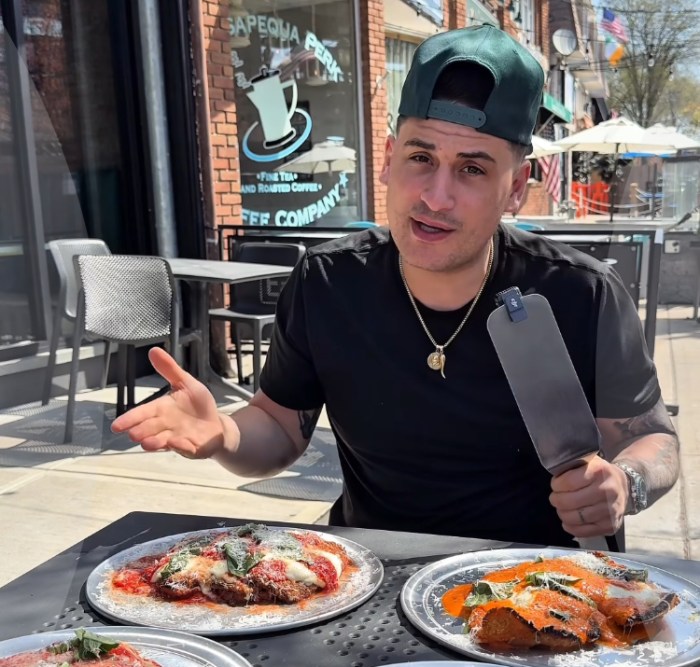New book offers a guide for healthy alternatives
Ever wonder the secret behind added sugars? Have you ever wanted to change your eating habits to include less added sugars? Well, now you can and it’s way simpler than you might think. Samantha Cassetty is a co-author of Sugar Shock: The Hidden Sugar in Your Food and 100+ Ways to Cut Back, who said nutrition is not as hard as people make it seem to be.
“There’s this idea that nutrition has to be really complicated, confusing and time consuming,” Cassetty said. “I think the wellness industry has sort of co-opted what healthy eating is and it can be much easier than it’s sometimes made to seem.”

Q: For those who don’t know about your background, can you tell readers about yourself?
A: I am a registered dietitian with a masters in nutrition. I have previously served as the nutrition director for Good Housekeeping. I’ve made appearances on national TV shows like The Today Show and Dr. Oz. I have currently a weekly column for The Today Show and NBC News and I also have a small private practice.
Q: So how did you get your start in the health industry?
A: I always knew that I wanted to do something in health, I guess after I graduated college. It’s that period of time where you’re learning to become sort of independent and on your own and also you have no money. I was cooking a lot and really undergoing sort of a transformation in terms of feeding myself better and feeling better. I really wanted to explore that. When I went to school I knew that I wanted to work more broadly with people in that media setting so that I could help more people with their everyday challenges around eating.
Q: How did you become interested in being a media professional in the health industry as well?
A: I’ve actually been doing this for two decades. When I first graduated, I just knew that this is what I wanted to do. My first job in nutrition was actually at Good Housekeeping working in health media. At that time in the early days of my career, I was doing monthly segments that were broadcasted to about 90 top tier markets nationwide, doing little short segments on nutrition and health. I guess I just always knew I wanted to do it and set my mind to it and I found an opportunity and carved that niche for myself early on.
Q: Why did you want to co-author a book about sugar?
A: It’s really a growing concern. About 75 to 80 percent of the packaged foods that we eat contain added sugars. Largely, those come from five main forces. Those are things like soda, coffee drinks and tea drinks, obviously you know you have your sweets. Even things such as cereal and granola bars. I think it’s really important for consumers to know where these sugars are coming into their diet so that they can cut back. Added sugars can really take a toll on your health. Liquid added sugar, such as those from sugary beverages, such as soft drinks and coffee drinks are especially harmful. They’re very highly linked to weight problems. Added sugars can contribute to diabetes and they also can undermine our immune system. I think we’re seeing now in this environment of COVID-19 that people who have higher than normal body weights, people who have diabetes are at higher-risk for serious infections from COVID-19 because their bodies aren’t functioning optimally because they have these issues. One of the best things that you can do is to control the amount of added sugars that you take in.
Q: Can you discuss a few of the added sugars that people should know and for people that are used to added sugars what are healthier replacements?
A: There are more than 50 names of added sugars in our food supply. When you’re reading labels you’re going to see things like brown rice syrup or apple juice concentrate or pear juice concentrate, cane juice crystals. There are a number of different ways that can show up on a food label. In terms of replacements, now we are going to talk about products versus those individual sweeteners. You always want to compare labels. You want to look at both the added sugars, which is now a lot easier to detect on a food label, because they state it. You also want to see ingredients because you know the nutrition facts panel, looking at the added sugars, looking at serving size, that’s only giving you a piece of the picture. You don’t know the quality of the food if you’re not looking at the ingredients. In terms of the swaps, I would suggest something fizzy like a Spindrift with a splash of juice. It is a bubbly seltzer, carbonated water. It comes in flavors like blackberry, raspberry and lemon. These contain no added sugars; they contain a splash of 100 percent fruit juice so it’s giving you that bubbly sweet flavor, but in a much healthier way. If you’re consuming sweetened cereal, there’s a couple things that I would suggest. One is that you can mix it with an unsweetened cereal to cut the sugar starting with whatever mix or ratio is tolerable to you and then, gradually reducing that down till you’re about 25 percent or less of the sweetened variety and 75 percent or more of the unsweetened, whole-grain, healthy variety or less sweetened variety.
Sugar Shock: The Hidden Sugar in Your Food and 100+ Ways to Cut Back, comes out on Sept. 15. The paperback version will be available for purchase at all major booksellers as well as on Amazon.com.





























